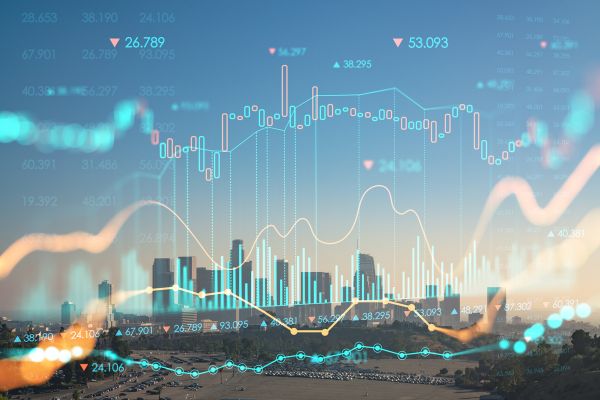Table of Contents
Did you know that more than 600 million people engage in some form of crypto or forex trading every year? As the number keeps rising and so does the confusion for beginners trying to decide where to start. I’ve been in that exact spot before, staring at charts and comparing both markets, trying to answer one simple question “Which of these markets is actually right for me?”
The truth is, your first trade shouldn’t come from guesswork. It should come from clarity. And clarity only happens when you understand the key differences that shape each market. Most beginners skip this part, and that’s the reason many end up frustrated early on.
This article is built to remove that uncertainty. Instead of throwing random tips at you, it gives you a straightforward insight into how both markets work, what moves their prices, and which market aligns with your goals, your risk appetite, and the kind of trading experience you want to build from day one.
What is Forex Trading

Forex trading, also known as foreign exchange trading, is the process of buying and selling global currencies with the goal of making a profit from price movements. Every currency has a value that rises or falls based on economic events, government policies, and global market activity. Forex traders take advantage of these changes by predicting when one currency will strengthen against another.
The entire market operates through currency pairs. For example, EUR/USD or GBP/JPY. Instead of trading a single asset, you’re trading the relationship between two currencies at any given moment. When you expect one currency to gain value, you buy the pair; when you expect it to weaken, you sell.
The forex market is also known for its size, it is the largest financial market in the world, with a daily trading volume exceeding $6 trillion, open 24 hours a day during weekdays, and driven by banks, institutions, governments, and everyday traders.
What is Crypto Trading?

Crypto trading involves buying and selling digital currencies, such as Bitcoin, Ethereum, Ripple, and other cryptocurrencies with the goal of making a profit from price fluctuations. These assets operate on blockchain technology, which ensures secure, transparent, and decentralized transactions without the need for central authorities.
Trades are conducted on crypto exchanges, where prices are determined by supply, demand, and market sentiment. Traders use crypto exchanges and trading pairs to speculate on price movements, taking advantage of the market’s high volatility. Popular strategies include day trading, swing trading, and long-term holding.
The crypto market runs 24/7, allowing traders to react instantly to news, technological updates, or sudden market movements. While crypto trading offers high volatility and potential profits, it also comes with significant risks, making research, strategy, and discipline essential for anyone entering the market.
Crypto Trading vs Forex Trading: The Differences
While both crypto and forex trading involve buying and selling assets to profit from price movements, the markets operate very differently in:
1. Market Structure
Forex is run by big banks and financial institutions, which makes it more organized and stable. Crypto, on the other hand, runs on decentralized networks like blockchain, giving traders more freedom but also less oversight and more responsibility for security.
2. Volatility
Crypto prices can jump or drop in a short time, which creates opportunities for big profits but also increases the chance of losses. Forex moves more slowly, with smaller, predictable changes.
3. Liquidity
Forex is very easy to buy and sell because billions of dollars are traded every day. Some cryptocurrencies, especially less popular altcoins with low liquidity are harder to trade fast.
4. Regulation and Security
Forex is heavily regulated, which adds a layer of safety for traders and helps prevent fraud. Crypto relies on the security of exchanges and the blockchain network.
5. Transaction Fees
Forex usually has small spreads and low fees. Crypto fees vary depending on the exchange and the blockchain network’s activity. During busy periods, fees can spike, especially for transactions on networks like Ethereum.
6. Assets and Market Age
Forex trades well-known currency pairs. Crypto has coins, tokens, stablecoins, and altcoins, and the market is still new and growing which adds both opportunities and uncertainties.
7. Risk Levels
Crypto is generally riskier because of rapid price swings and less regulation. Forex is more stable, with smaller daily price changes and more predictable patterns, making it easier to plan trades and manage risk.
Similarities Between Crypto and Forex Trading
While crypto and forex have many differences, they also share several key features that make them comparable for traders:
1. Speculation on Price Movement
Both crypto and forex trading revolve around predicting price changes. Traders buy an asset expecting it will rise or sell it if they think it will fall, aiming to profit from these movements.
2. Use of Trading Pairs
Both markets operate using pairs. In forex, it’s currency pairs like EUR/USD, while in crypto, it’s pairs like BTC/USDT. Understanding the relationship between two assets is critical to making profitable trades.
3. Use of Charts and Technical Analysis
Traders in both markets rely heavily on charts, indicators, and patterns to make decisions. Learning how to read candlesticks, identify trends, and spot support or resistance levels is essential for success.
4. Global Accessibility
Crypto and forex are open to anyone with an internet connection. Whether you use a broker for forex or a crypto exchange, you can trade from anywhere in the world.
5. Risk and High Reward
Both markets involve risk. Volatility can lead to large profits, but it can also result in substantial losses. Success depends on knowledge, strategy, and discipline rather than luck.
6. Influence of Market Sentiment
Prices in both markets are affected by sentiment and current events. News, economic data, and social trends can trigger sudden movements, making it important for traders to stay informed.
Which Should You Choose Between Crypto Trading and Forex Trading
Choosing between crypto and forex depends on your risk tolerance, comfort with market volatility, and how well you understand each market. Forex is generally more stable, regulated, and easier for beginners, making it ideal if you prefer predictable patterns and lower risk. Crypto is highly volatile, runs 24/7, and can deliver bigger short-term gains, but it requires more attention and can be riskier.
Consider your time availability, comfort with volatility, and learning curve. Forex works well if you want structure and consistency, while crypto suits traders who can handle fast changes and enjoy active trading. Ultimately, the right market is the one that matches your personality, goals, and willingness to manage risk.
Can You Trade Both?
Yes, it’s possible to trade both crypto and forex, and many traders do. Managing both markets allows you to diversify your opportunities and take advantage of different market conditions.
However, trading both requires careful planning. Crypto is volatile and moves quickly, while forex is more stable but requires understanding global economic trends. To trade both successfully, you need time, strategy, and discipline to monitor each market and manage risks effectively.
Many traders start with one market to build experience before adding the other. Doing so helps you understand the unique demands of each market and prevents overwhelm, especially as a beginner.
Frequently Asked Questions (FAQs) About Crypto Trading vs Forex Trading
Which is more profitable: crypto or forex trading?
Crypto can offer larger short-term gains due to high volatility, while forex generally provides steadier, more predictable profits. Profit depends on strategy and risk.
Which is safer for beginners?
Forex is usually safer because it is regulated and more stable. Crypto carries a higher risk due to sudden price swings and less oversight.
Do I need a broker for forex and an exchange for crypto?
Yes. Forex trades are made through brokers, while crypto trades are done on exchanges. Both provide the platform and tools to buy and sell assets safely.
Can I start trading with a small amount of money?
Yes. Both markets allow small investments. Many brokers and exchanges let you trade micro-lots or fractional amounts, making it possible to start with limited capital.
Are both crypto and forex regulated?
Forex is heavily regulated worldwide. Crypto regulation varies by country and exchange, with some platforms operating without oversight.
Conclusion
Both crypto and forex trading offer real opportunities, but they also carry real risks. Now that you understand the key differences, similarities, costs, and volatility of each market, you’re in a better position to choose the one that fits your goals. Take your time to study the market, start with small trades, and focus on building knowledge and experience steadily.
Also, discipline, a clear strategy, and emotional control are just as important as capital when it comes to trading successfully. Whether you choose crypto, forex, or decide to explore both, approaching trading with patience and preparation will increase your chances of making smarter, more confident decisions.
Last updated on December 3, 2025

